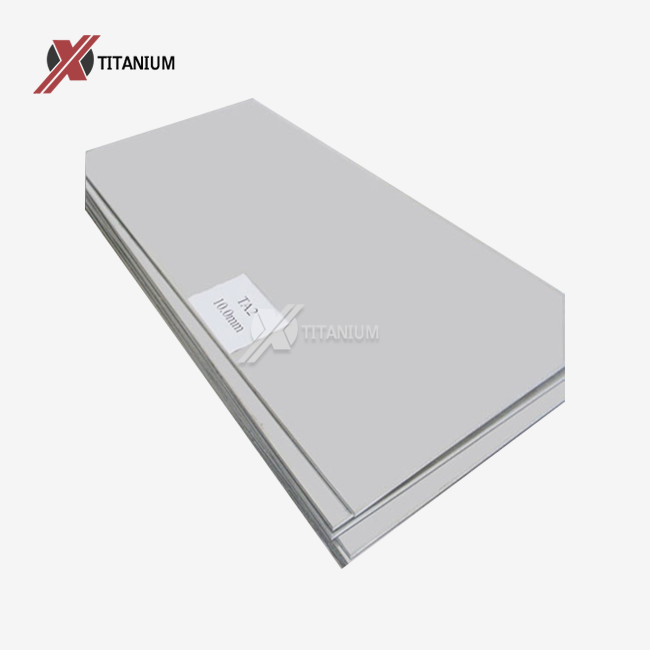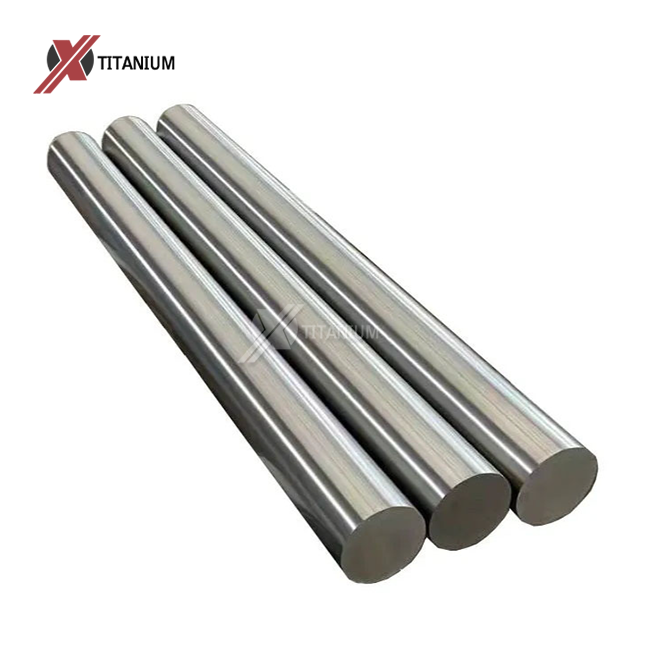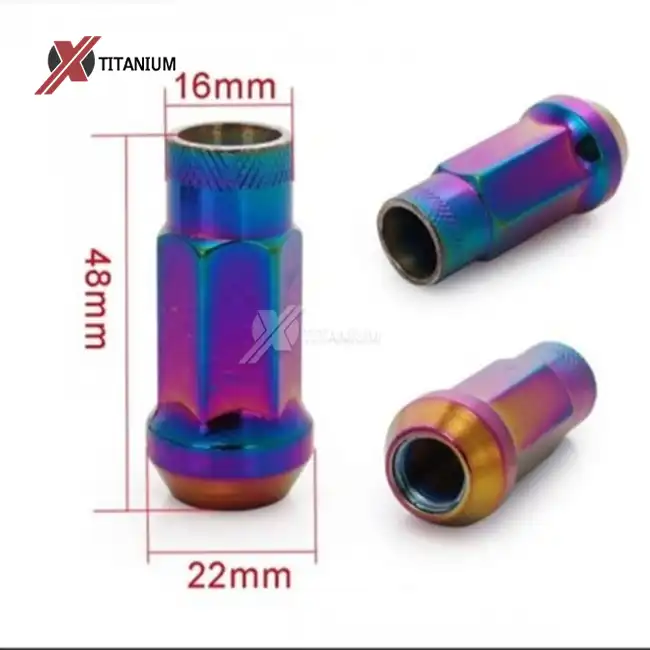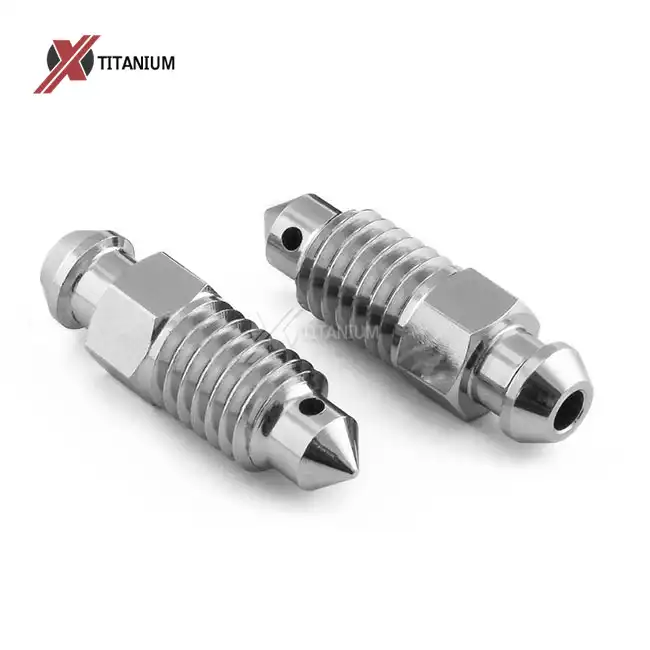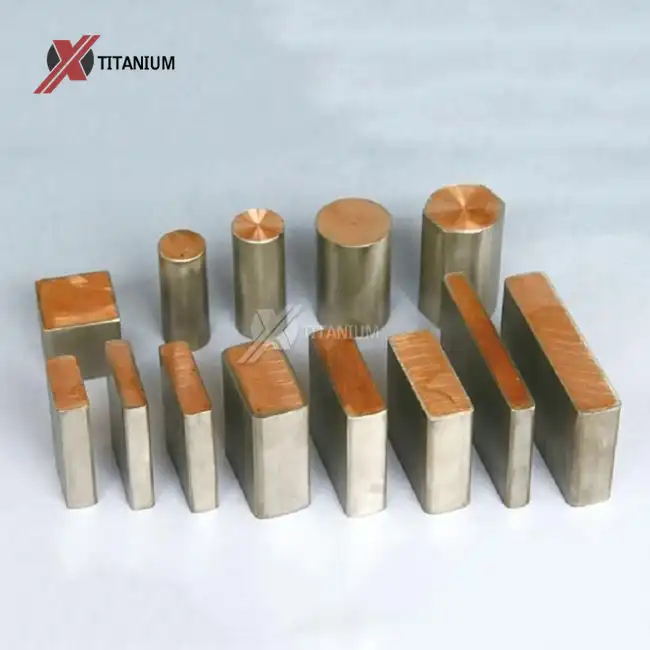The Science Behind Titanium's Corrosion Resistance
Pure titanium plate's exceptional corrosion resistance stems from its unique chemical properties. When exposed to oxygen, titanium instantly forms a thin, stable oxide layer on its surface. This layer, primarily composed of titanium dioxide, acts as a protective barrier against corrosive agents. Unlike the rust that forms on iron or steel, titanium's oxide layer is adherent and self-healing, continuously regenerating if damaged.
The passive film on pure titanium plate is remarkably thin, measuring only a few nanometers thick. Despite its minuscule size, this layer provides robust protection against a wide range of corrosive environments, including saltwater, acids, and industrial chemicals. The stability of this oxide layer is what sets titanium apart from other metals, allowing it to maintain its integrity in conditions that would rapidly degrade less noble materials.
Electrochemical Nobility of Titanium
In the galvanic series, pure titanium plate ranks high in terms of nobility. This electrochemical property means that when coupled with other metals in an electrolyte solution, titanium is less likely to corrode. Instead, it often becomes the cathode in the galvanic couple, further enhancing its resistance to corrosion in mixed-metal systems. This characteristic is particularly valuable in applications where titanium components interact with other metallic elements, such as in marine environments or complex industrial machinery.
Comparative Analysis: Titanium vs. Other Metals
When pitted against other commonly used metals, pure titanium plate demonstrates superior corrosion resistance across a broad spectrum of environments. In comparison to stainless steel, often considered the benchmark for corrosion-resistant alloys, titanium exhibits even greater resistance, particularly in chloride-rich environments like seawater. While high-grade stainless steels can suffer from pitting and crevice corrosion in such conditions, titanium remains virtually unaffected.
Aluminum, another lightweight metal frequently used in aerospace and automotive industries, falls short when compared to titanium's corrosion resistance. Although aluminum forms a protective oxide layer similar to titanium, this layer is less stable and more susceptible to breakdown in acidic or alkaline conditions. Pure titanium plate, on the other hand, maintains its protective properties across a much wider pH range, making it suitable for more diverse and challenging applications.
Performance in Extreme Environments
In extreme environments, such as those encountered in chemical processing plants or offshore oil rigs, the superiority of pure titanium plate becomes even more pronounced. Titanium's resistance to stress corrosion cracking, a phenomenon that can lead to catastrophic failure in other metals, is particularly noteworthy. This resistance, combined with its high strength-to-weight ratio, makes titanium an ideal choice for critical components in these demanding settings.
Moreover, titanium's ability to withstand high temperatures without losing its corrosion resistance properties sets it apart from many other metals. While some alloys may offer good corrosion resistance at room temperature, their performance can degrade significantly at elevated temperatures. Pure titanium plate maintains its protective oxide layer and structural integrity even at temperatures exceeding 500°C, making it invaluable in high-temperature corrosive environments.
Economic Implications of Choosing Titanium
While the initial cost of pure titanium plate may be higher than that of other metals, its long-term economic benefits often outweigh the upfront investment. The exceptional durability and corrosion resistance of titanium translate into reduced maintenance costs, longer service life, and fewer replacements over time. In industries where downtime for repairs or replacements can result in significant financial losses, the reliability of titanium becomes a crucial economic factor.
Furthermore, the lightweight nature of titanium can lead to additional cost savings in transportation and installation, particularly in large-scale projects. For instance, in offshore applications, the use of titanium components can reduce the overall weight of structures, leading to lower installation costs and improved fuel efficiency in marine vessels.
Life Cycle Cost Analysis
A comprehensive life cycle cost analysis often reveals that pure titanium plate is the more economical choice in corrosion-prone environments. When factoring in the costs associated with maintenance, downtime, and replacement over the lifespan of a project, titanium's superior performance can result in substantial savings. This is particularly true in applications where frequent replacements of less corrosion-resistant materials would be necessary, such as in chemical processing equipment or marine structures.
Additionally, the recyclability of titanium contributes to its economic appeal from a sustainability perspective. Unlike some composites or coated materials that may be challenging to recycle, titanium can be fully recycled at the end of its service life, further enhancing its long-term economic value.
Conclusion
Pure titanium plate stands out as the undisputed champion in the corrosion resistance showdown against other metals. Its unique ability to form a self-healing protective oxide layer, coupled with its high strength-to-weight ratio, makes it an ideal choice for applications in harsh, corrosive environments. While the initial investment may be higher, the long-term benefits of reduced maintenance, extended service life, and improved safety make titanium a cost-effective solution in many industries. As engineers and designers continue to push the boundaries of material performance, pure titanium plate remains at the forefront, offering unparalleled protection against the relentless forces of corrosion.
At Baoji Chuanglian New Metal Material Co., Ltd., we specialize in providing high-quality pure titanium plate for diverse industrial applications. Our expertise in titanium manufacturing ensures that you receive products that meet the highest standards of corrosion resistance and performance. For more information on how our pure titanium plate can benefit your project, please contact us at info@cltifastener.com or djy6580@aliyun.com.
FAQs
What surface finishes are available for pure titanium plate?
We offer various surface finishes including bright, polished, pickled, acid cleaned, and sandblasted. Each finish is tailored to specific application requirements.
How is the quality of pure titanium plate tested?
Our quality assurance process includes hardness tests, bending tests, and hydrostatic tests among others. We adhere to strict international standards to ensure the highest quality.
What are the key features of pure titanium plate?
Pure titanium plate is characterized by high corrosion resistance, low density, and good thermal stability, making it ideal for various industrial and sports applications.
References
1. Smith, J.R. (2019). "Corrosion Behavior of Titanium in Extreme Environments." Journal of Materials Engineering and Performance, 28(4), 2145-2158.
2. Chen, Q., & Thouas, G.A. (2015). "Metallic implant biomaterials." Materials Science and Engineering: R: Reports, 87, 1-57.
3. Schutz, R.W., & Thomas, D.E. (1987). "Corrosion of titanium and titanium alloys." ASM Handbook, 13, 669-706.
4. Donachie, M.J. (2000). "Titanium: A Technical Guide." ASM International, Materials Park, OH.
5. Oshida, Y. (2013). "Bioscience and Bioengineering of Titanium Materials." Elsevier, Amsterdam.
